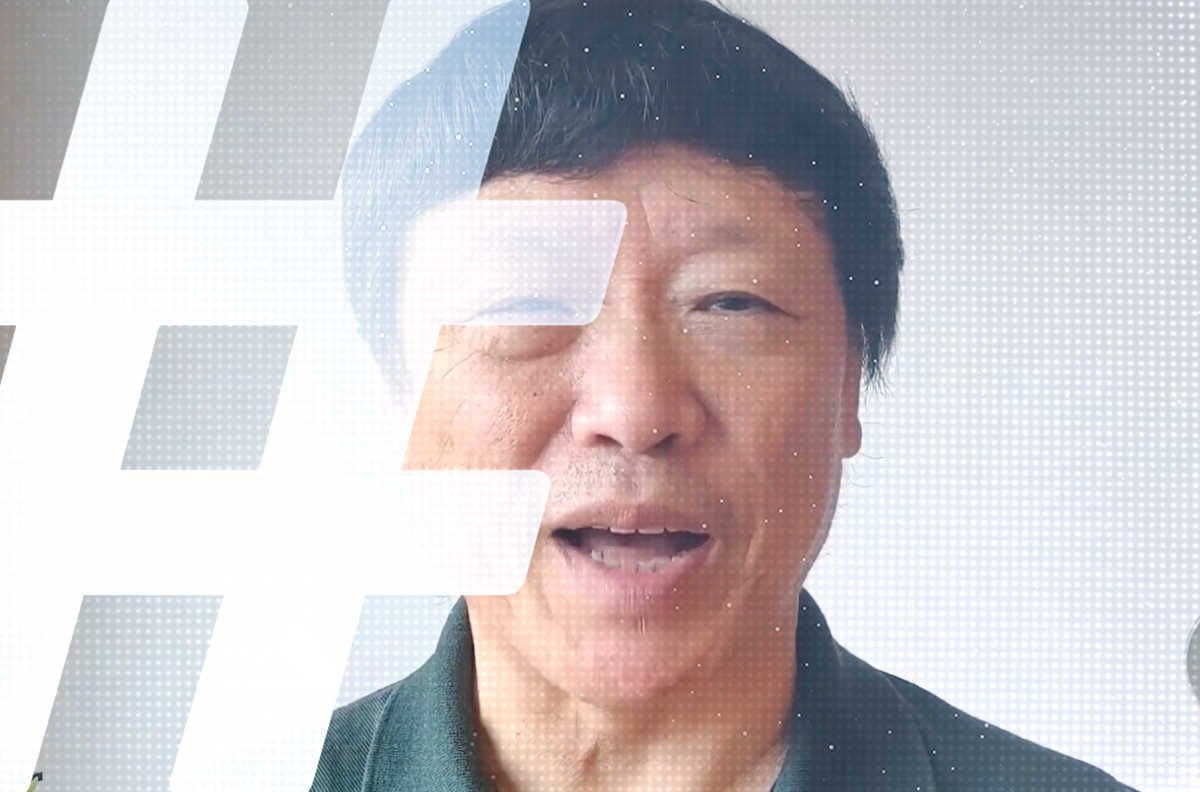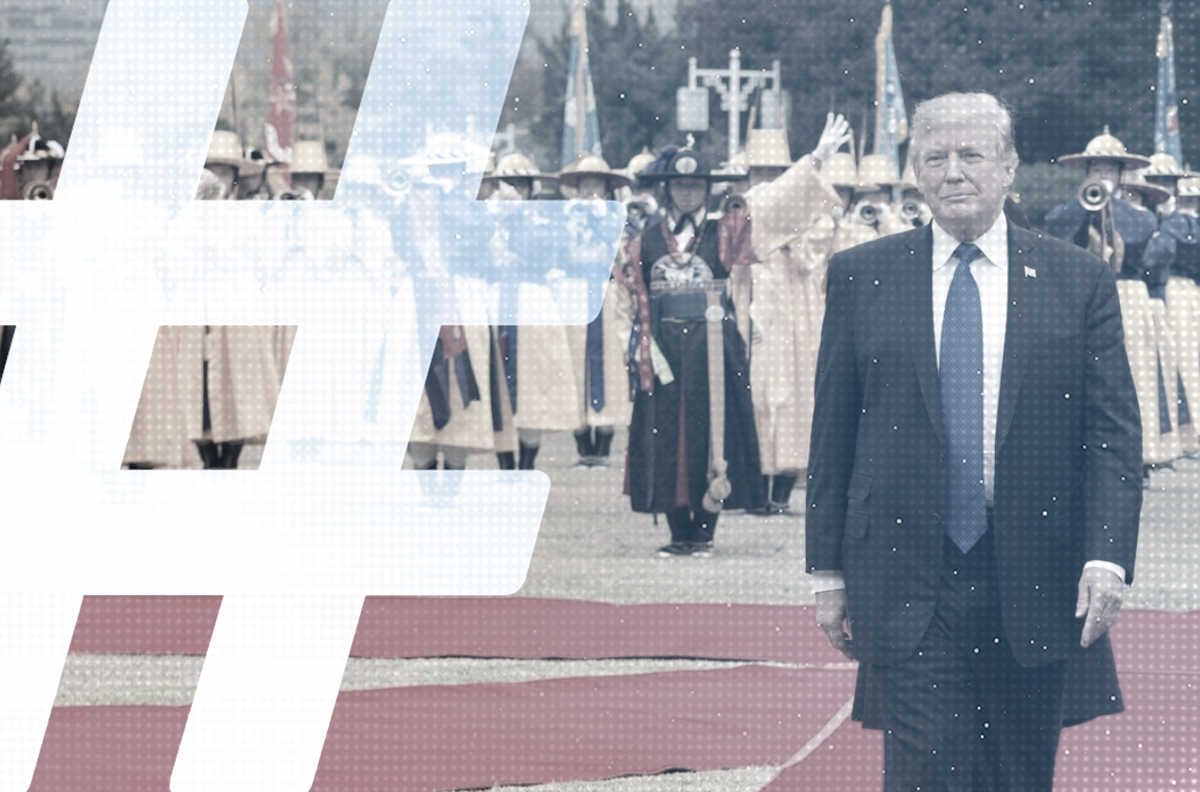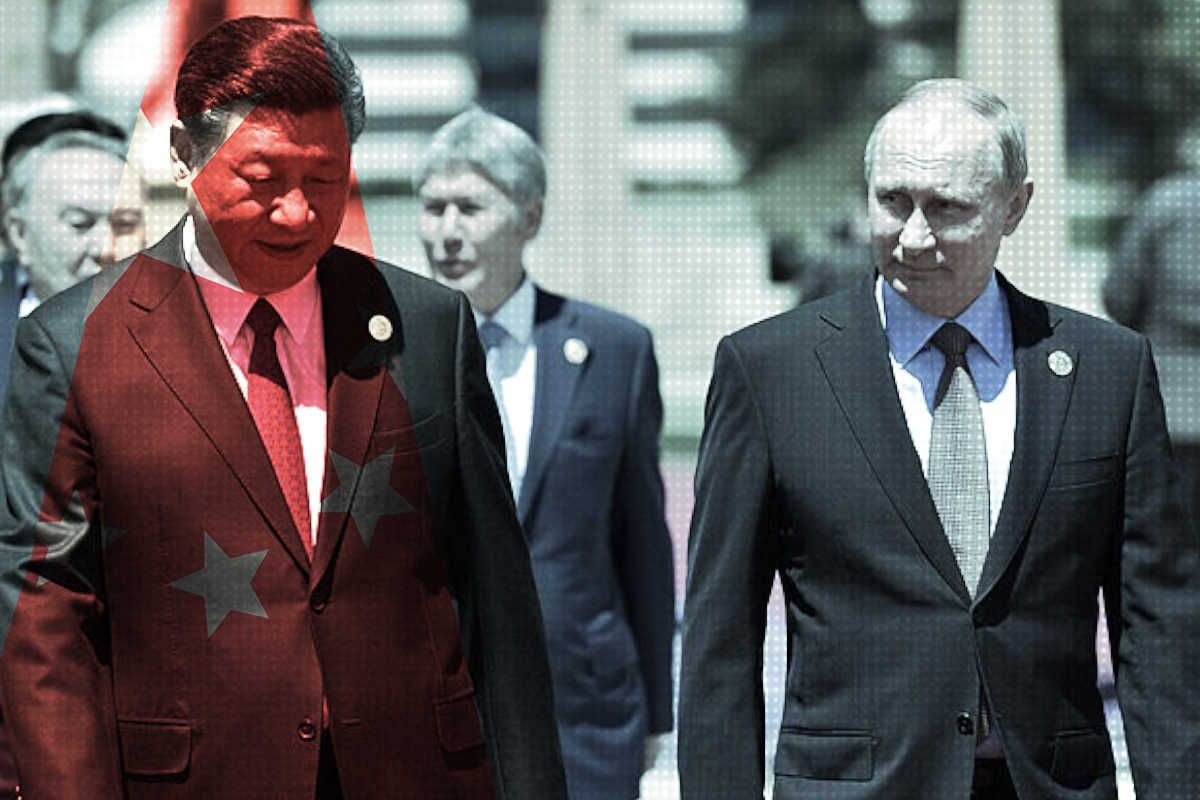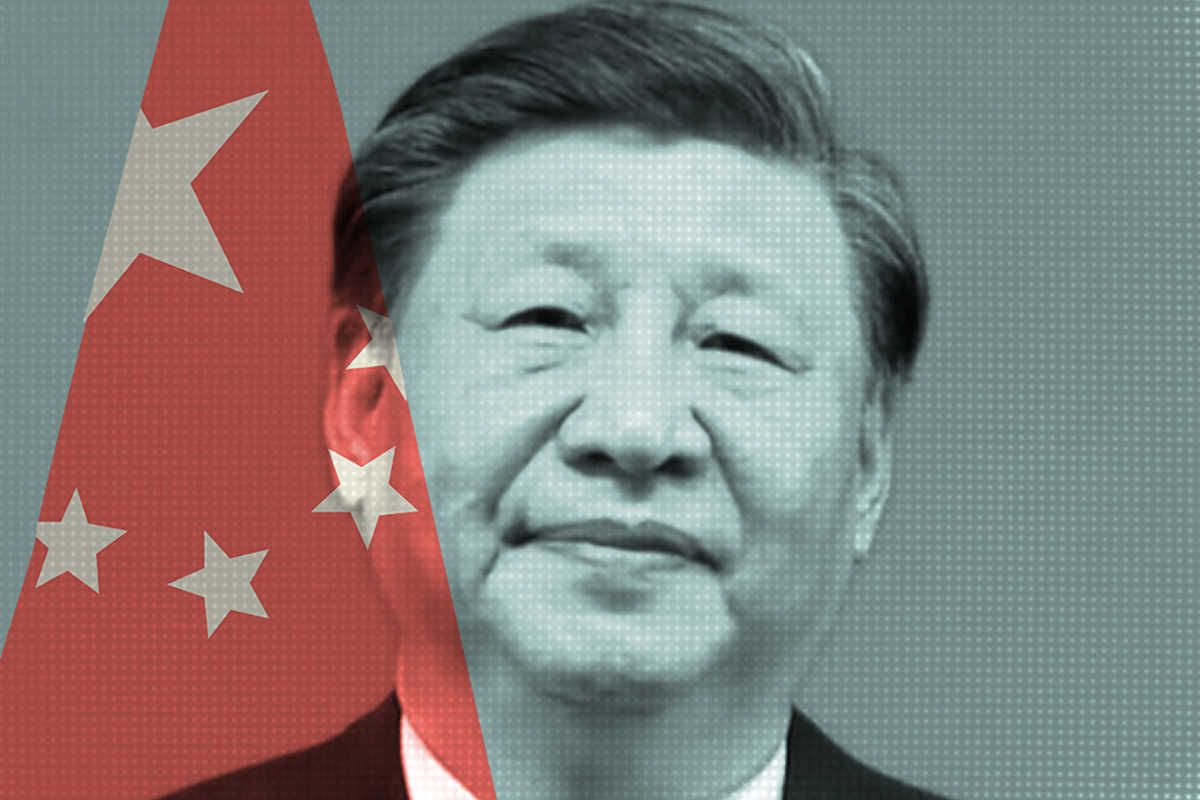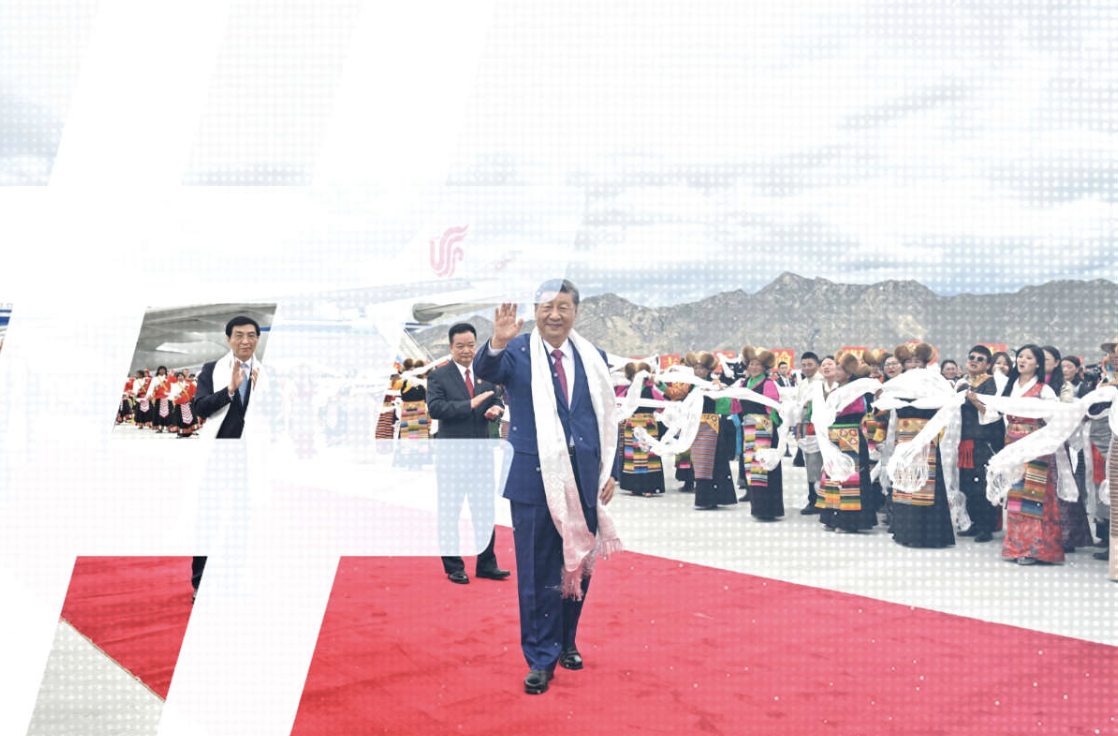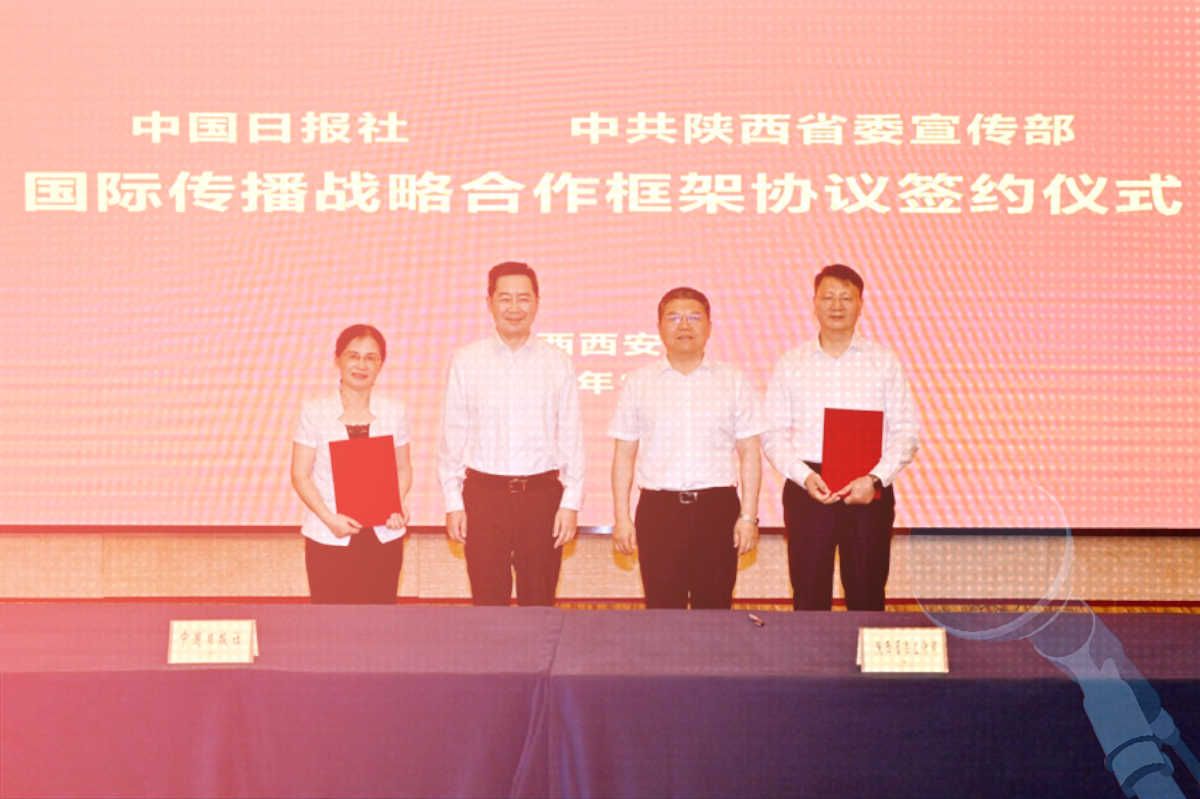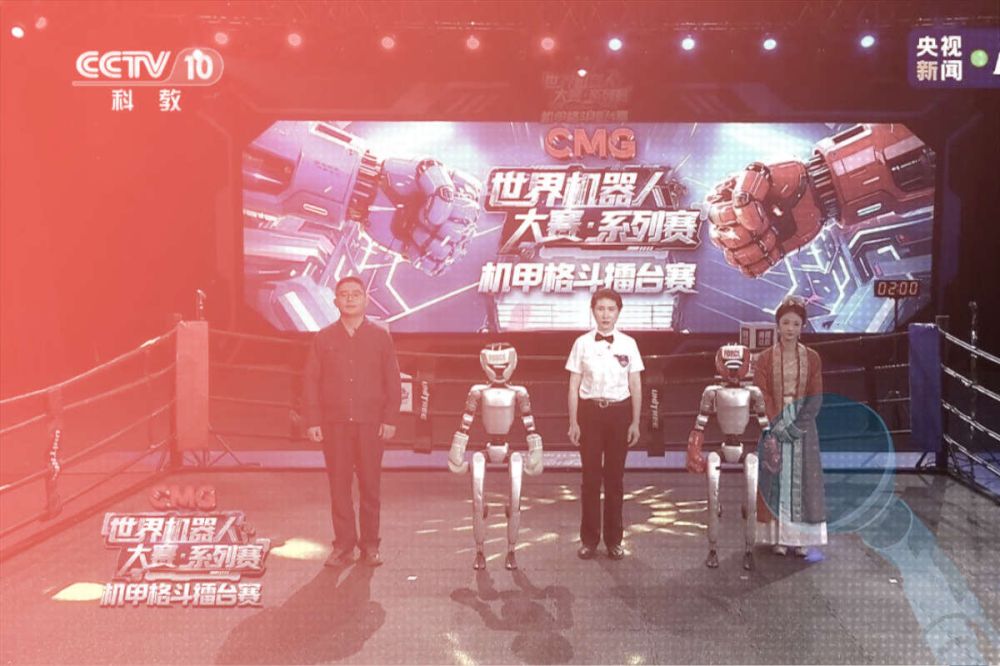
For the Chinese Communist Party, achieving the objective of external propaganda is sometimes about spreading the word about the glories of Xi Jinping Thought, or the supposed benefits of the Belt and Road Initiative — and sometimes it’s about sensational robot boxing matches.
Last Sunday, the China Media Group (中央廣播電視總台), the state-run media conglomerate directly under the CCP’s Central Propaganda Department, staged what it claimed was the world’s first humanoid robot boxing competition, featuring G1 robots from Hangzhou-based tech firm Unitree throwing punches and executing kicks in one-on-one matches broadcast live by China Central Television.
The spectacle, the latest in a series of sporting robot events put on by state media, was about more than raw entertainment. Why robots? Because robots embody futuristic appeal. They are more visual and more marketable than the latest AI model grinding out text or video. They naturally generate viral content that travels across social media platforms and news outlets without appearing like overbearing state propaganda. The objective is simple tech showmanship, advertising China’s supposed technological prowess in newly attractive ways, both to Chinese and to audiences overseas.
While the impact of such campaigns is difficult to measure, their viral nature pegs them as natural candidates for reposting. Across the internet this week — shared by personal social media accounts and bona fide news outlets like the BBC, NBC and Al-Jazeera — the spectacle of battling robots titillated global audiences.
Media everywhere took the bait, paving the way for yet more soft state propaganda featuring robots doing incredible deeds.
Taking the Bait in Taiwan
The pattern of spectacle was repeated in the case of Taiwan, with one important difference. Coverage across the Taiwan Strait of the robot antics on CCTV fed immediately into state media propaganda about Chinese economic and tech prowess — and the inevitability of unification. Never mind that Taiwan is home to the world’s most advanced chips behind a whole range of industries, including robotics.
Several pan-blue Taiwanese media outlets provided enthusiastic coverage of the CMG robot tournament. CTi News (中天新聞台), the social media account run by the often blatantly pro-China Want Want Holdings-backed China Times (中國時報), TVBS News (TVBS新聞台), ETtoday and other largely pan-blue outlets — leaning, in other words, toward the opposition KMT and its more supportive stance toward China — all reported enthusiastically on what they characterized as a breakthrough moment. “Human fighting is very common, but this might be the first time we have robots in the ring,” said an over-excited report from Da Ai Television (大愛電視), a network founded by a Buddhist charity organization in Taiwan, which added that the event was “expected to become an important milestone in smart robot applications.”
Chinese state media then amplified this Taiwanese coverage as evidence of cross-strait admiration — not just for China’s advertised technological prowess, but also for its “leaping development.”
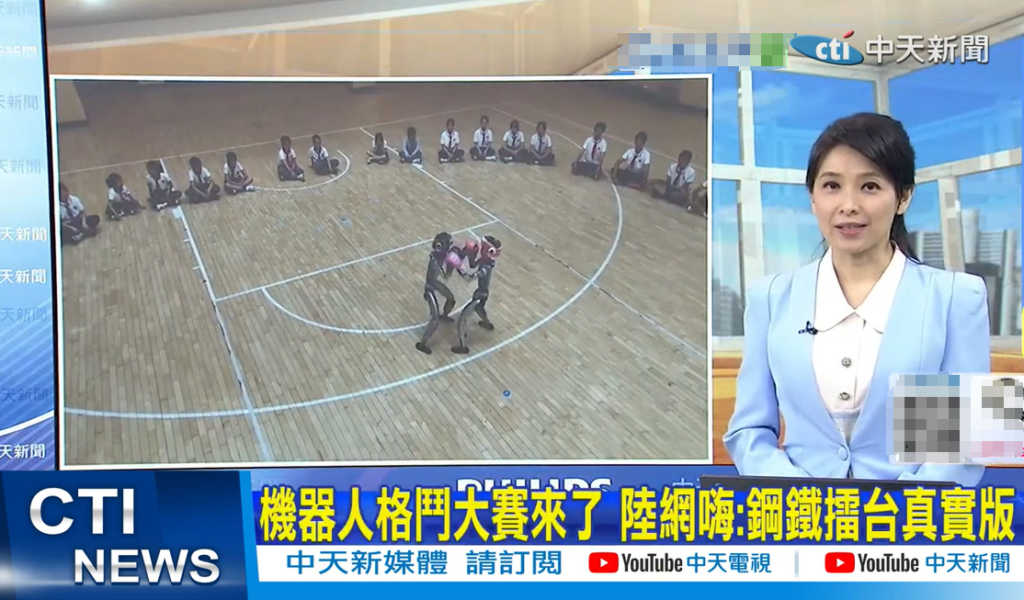
In a May 26 report by CMG’s “Look at the Taiwan Strait” (看台海) program, the broadcaster highlighted how “Taiwan compatriots see the rapid development of the mainland motherland” through CMG’s media technology innovations. The report quoted Chen Wencheng (陈文成), described as a Beijing University Taiwan teacher, as saying that many young Taiwanese “yearn for mainland technology and products.” They hoped, he said, that CMG could hold similar competitions “on Taiwan island” so that “compatriots on the island can directly experience innovative achievements in robotics industry development.”
Chen, who in the past has said that “mainland democracy is democracy that truly serves the people,” is affiliated with the All-China Federation of Taiwan Compatriots, a state-sponsored organization currently led by Zheng Jianmin (郑建闽), who serves as deputy director of the Overseas Chinese Affairs Committee of the CCP, which operates under Beijing’s United Front Work Department.
The Pursuit of “Cuteness”
CMG’s robots may be battling for supremacy in the ring, but the broader goal beyond the ring is to attain the “cuteness” (可爱) Xi Jinping referenced in a May 2021 collective study session of the CCP Politburo. In that address on international communication capacity building, Xi called for China to project a “credible, lovable, and respectable” image to the world — a mild corrective departure from the aggressive “wolf warrior” diplomatic style that had dominated Chinese foreign relations for several years to that point.
The timing was no coincidence. China’s international image had suffered significant damage amid rising tensions with Western nations over Hong Kong, Xinjiang, and the COVID-19 pandemic response. Xi’s call for “cuteness” represented a strategic pivot toward what Chinese officials describe as a more “humble and modest” approach to international engagement, while maintaining firm positions on core issues.
Culture and technology are regarded as key areas in which to engage foreign audiences. While China’s official messaging may at times, as necessary, be firm on key positions, those positions can often be better conveyed through soft content that achieves a sharp purpose.
As one Chinese government document on building China’s international image notes, the goal is to “construct multi-channel, three-dimensional international communication patterns” that showcase China’s technological achievements while demonstrating the superiority of its political system. Robot competitions serve this dual purpose perfectly — they appear apolitical while subtly reinforcing narratives about Chinese innovation and government effectiveness.
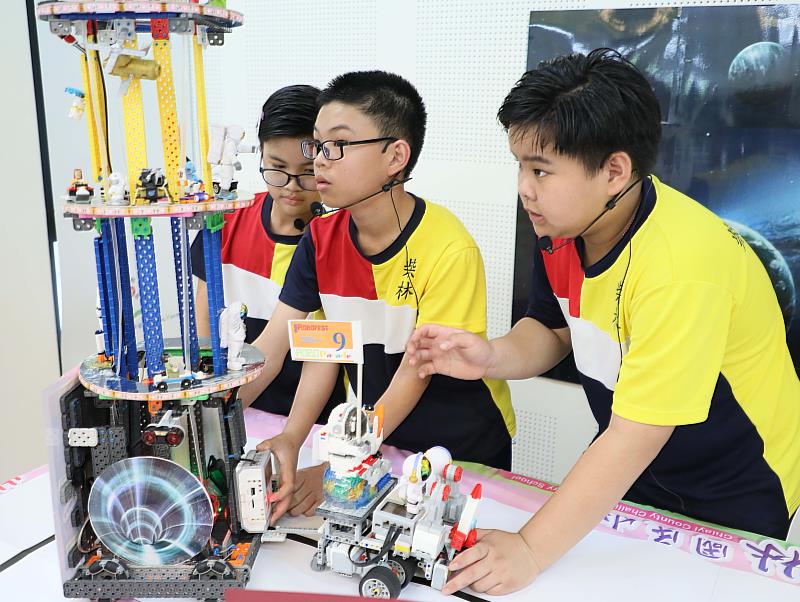
In an interesting contrast to the sensationalism of CMG, several other Taiwanese media, including the government-run Central News Agency and the pan-green Liberty Times, featured their own robot competition story this week. But the focus in this case was far more down to earth as they reported on elementary school students from Chiayi County’s Chailin Elementary School who won the world championship at the 2025 Robofest World Robotics Competition in Michigan.
No robot battles. Just inquisitive kids preparing their minds for the future, with battery packs, wheels and basic components.
Whatever the case in terms of China’s real preparedness and leadership when it comes to technology, the CMG propaganda formula appears set for expansion. The network plans additional robot competitions, including football and basketball tournaments. Robots are invading China’s media across the board, as evidenced in regular features like this one in yesterday’s Southern Metropolis Daily — an entire page, with a robot right at center, about investments by Chinese internet giants in embodied intelligence companies.
The enthusiastic coverage of CMG’s latest spectacle by global media outlets as well as pan-blue media in Taiwan suggests that this “cute” approach to sharp power could be effective in ways that are difficult to measure — particularly as related clips and memes fire across social media platforms.





